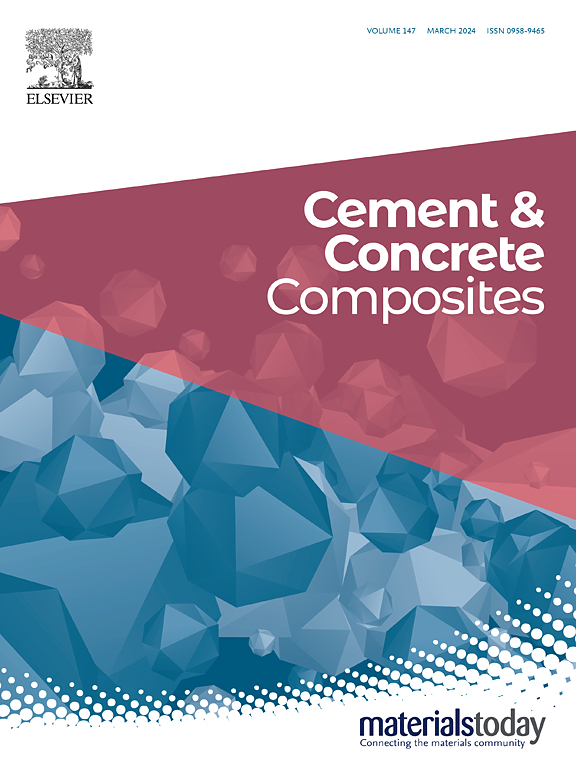Physical and chemical processes in alkali-activated aluminosilicates at high temperatures and their effect on functional properties: A critical review
IF 10.8
1区 工程技术
Q1 CONSTRUCTION & BUILDING TECHNOLOGY
引用次数: 0
Abstract
Alkali-activated aluminosilicates (AAA) are considered a potential environmentally friendly alternative to traditional concrete. Previous studies also showed their better high-temperature performance as compared with cement-based composites. In this paper, a comprehensive assessment of AAA's behavior at high temperatures is presented. A detailed analysis of physical and chemical processes taking place in AAA in a high-temperature range is performed at first. The findings gathered make then it possible to summarize how exposure to high temperatures changes AAA's microstructure and phase composition and how it affects macroscopic properties. The great potential of AAA for a broad range of applications requiring high-temperature resistance is confirmed. The advantages of AAA stem mainly from the fact that their structure is stable even without water molecules (or OH− groups) and further from the ability to self-heal during geopolymerization, which is enabled both by temperature-induced geopolymerization and, at higher temperatures (typically above 800 °C), by sintering. Mortars with high-temperature resistant aggregate and suitable fibers can be considered as the optimal form of AAA, as pastes exhibit high shrinkage during high-temperature exposure. The critical analysis of extensive datasets reveals some gaps in the current state of knowledge, such as the lack of a consolidated understanding of phase transformations and microstructure-property relationships at high temperatures. Additionally, certain aspects remain unclear, among them the suitability of using low-melting or natural fibers that would be able to create paths for water release during heating from the dense matrix, the optimal Si/Al ratio, or the optimal activator solution.
高温碱活化硅酸铝的理化过程及其对功能性能的影响
碱活化铝硅酸盐(AAA)被认为是传统混凝土的潜在环保替代品。以往的研究也表明,与水泥基复合材料相比,它们具有更好的高温性能。本文对AAA在高温下的性能进行了综合评价。首先详细分析了在高温范围内发生在AAA中的物理和化学过程。这些发现使得总结高温如何改变AAA的微观结构和相组成,以及它如何影响宏观性能成为可能。在需要耐高温的广泛应用中,AAA具有巨大的潜力。AAA的优势主要在于,即使没有水分子(或OH-基团),它们的结构也很稳定,并且在地聚合过程中具有自愈能力,这既可以通过温度诱导的地聚合实现,也可以通过烧结在更高的温度下(通常高于800°C)实现。具有耐高温骨料和合适纤维的砂浆可以被认为是AAA的最佳形式,因为膏体在高温暴露时具有高收缩率。对大量数据集的批判性分析揭示了当前知识状态中的一些空白,例如缺乏对高温下相变和微观结构-性能关系的综合理解。此外,某些方面仍不清楚,其中包括使用低熔点或天然纤维的适用性,这些纤维能够在加热过程中从致密基质中释放水,最佳Si/Al比或最佳活化剂溶液。
本文章由计算机程序翻译,如有差异,请以英文原文为准。
求助全文
约1分钟内获得全文
求助全文
来源期刊

Cement & concrete composites
工程技术-材料科学:复合
CiteScore
18.70
自引率
11.40%
发文量
459
审稿时长
65 days
期刊介绍:
Cement & concrete composites focuses on advancements in cement-concrete composite technology and the production, use, and performance of cement-based construction materials. It covers a wide range of materials, including fiber-reinforced composites, polymer composites, ferrocement, and those incorporating special aggregates or waste materials. Major themes include microstructure, material properties, testing, durability, mechanics, modeling, design, fabrication, and practical applications. The journal welcomes papers on structural behavior, field studies, repair and maintenance, serviceability, and sustainability. It aims to enhance understanding, provide a platform for unconventional materials, promote low-cost energy-saving materials, and bridge the gap between materials science, engineering, and construction. Special issues on emerging topics are also published to encourage collaboration between materials scientists, engineers, designers, and fabricators.
 求助内容:
求助内容: 应助结果提醒方式:
应助结果提醒方式:


